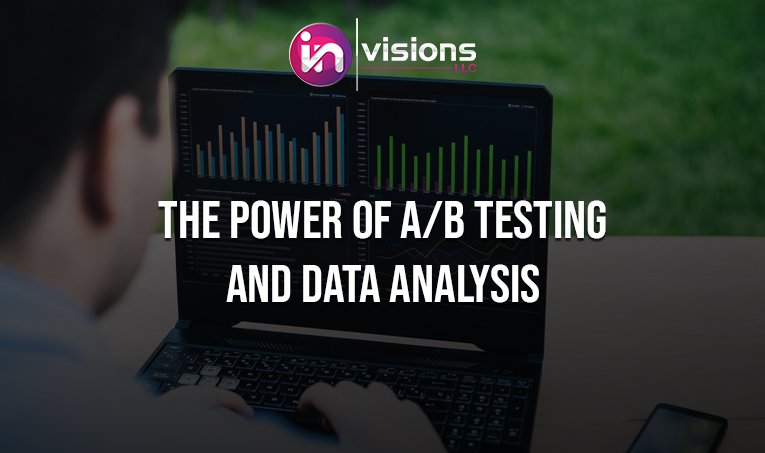Blog details
 16 apr
16 apr
The Power of A/B Testing and Data Analysis
In the ever-evolving digital landscape, simply having a website is not enough. To truly thrive online, businesses need to optimize their websites for maximum impact and achieve their desired goals, whether it's increasing conversions, boosting engagement, or improving user experience. This is where A/B testing and data analysis become indispensable tools in your arsenal.
What is A/B Testing?
A/B testing, also known as split testing, involves comparing two versions of a web page or element to see which performs better. By showing different variations to separate groups of visitors, you can gather valuable data on user behavior and preferences. This data-driven approach allows you to make informed decisions about website design and content, ensuring that every change you make contributes to improved performance.
How A/B Testing and Data Analysis Work Together
A/B testing and data analysis are complementary processes that work hand in hand to drive website improvement. Here's how they work together:-
1. Identify Areas for Improvement: Data analysis helps you pinpoint specific areas on your website that could benefit from optimization. This could include anything from headlines and call-to-action buttons to page layout and navigation.
-
2. Formulate Hypotheses: Based on your data analysis, you can develop hypotheses about how different changes might impact user behavior. For example, you might hypothesize that changing the color of a button will increase click-through rates.
-
3. Conduct A/B Tests: To test your hypotheses, you create two versions of the element you want to optimize, with one version serving as the control and the other as the variation. You then randomly show each version to different groups of visitors.
-
4. Analyze the Results: Once you've collected enough data, you analyze the results to determine which version performed better. This involves comparing key metrics like conversion rates, bounce rates, and click-through rates between the two versions.
-
5. Implement the Winning Variation: Based on the results of your A/B test, you implement the winning variation on your website. This ensures that you're always making data-driven decisions that lead to improved performance.
Benefits of A/B Testing and Data Analysis
-
Improved User Experience: You may design a more user-friendly and captivating website that meets the needs of users by comprehending their behavior and preferences.
-
Increased Conversions: Optimizing your website for conversions can lead to more leads, sales, and revenue.
-
Reduced Bounce Rates: By identifying and addressing friction points on your website, you can reduce bounce rates and keep visitors engaged.
-
Enhanced Content Engagement: A/B testing can help you determine which types of content resonate most with your audience, allowing you to create more engaging and valuable content.
-
Data-Driven Decision Making: A/B testing and data analysis provide you with concrete evidence to support your website optimization decisions.
Tools for A/B Testing and Data Analysis
-
Google Analytics: A free online analytics tool that offers insightful data on visitor behavior and website traffic.
-
Google Optimize: A free A/B testing tool that integrates seamlessly with Google Analytics.
-
Optimizely: A comprehensive A/B testing and personalization platform.
-
VWO (Visual Website Optimizer): Another popular A/B testing and conversion optimization platform.